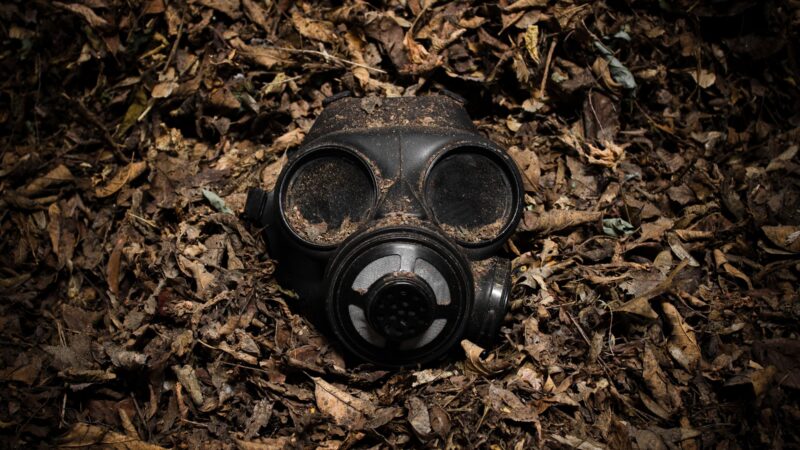Andrew Tate: Idolatry on the Right
In recent months, a phenomenon has swept through social and mainstream media, presenting itself as a paragon of masculinity, success, and wisdom against those that would seek to stultify and control the masses. This phenomenon was known as Andrew Tate, and his reach is something that a Westminster MP could only dream of and envy. At the time of writing this, he has 3.7 million followers on Twitter, and has appeared on Piers Morgan’s TalkTV show, GB News, and Fox News in America. But his reach has gone far beyond the chatter of tweets and the flaccid questioning of Mr Morgan, he has a growing following among teenage boys and those who would identify themselves politically on the right. It would seem to be somewhat innocuous that a figure of influence is ostensibly presenting a message encouraging males to embrace their masculinity and to develop their resilience, but is there more to Tate than meets the eye?
Let’s go back to the beginning. For the purposes of brevity and conciseness, I’m going to avoid a detailed biography of the former kickboxer, that’s what search engines are for. After a rather successful career in kickboxing, at one point ranking second best light-heavyweight kickboxer in the world. Tate first entered the media sphere in 2016, as a guest on the reality show Big Brother, during which time he was scrutinised for his comments on Twitter. Later, he created a website offering training on wealth accumulation and male-female interactions. His most well-known venture involved his brother, Tristan, in which they worked together to operate a webcam studio using his girlfriends to manipulate male callers. A venture which, by his own admission, was a “total scam”.
Again, conciseness would prevent me from going through every controversial post or tweet from Tate. But his recent takes on issues from Covid to Meghan Markle have garnered significant attention and support, resulting in those who agree with his positions to view him in a much more favourable light, in spite of previous controversies; seeing his announced conversion to Islam as a kind of Pauline, Damascene transformation that aligns him to those of us who yearn for a preservation of traditions that have previously maximised the wellbeing of men, women and the raising of children.
Christ warned, in the gospels, of wolves in sheep’s clothing- people who will appear righteous in their sayings and public actions but have their own motives beneath the surface (he intended this as a warning to Christians about those who would enter the body of the church with ulterior motives). Too often, the right has easily clung to different individuals who mimic soundbites or present-day talking points. Interestingly, the most recent social media exchange involving Tate and Climate Changes’ equivalent to the medieval ‘Mad Child Saint’ Greta Thunberg, was actually a clash between two idols; one deified predominantly by the left, and one by the right. Battle lines were drawn and electronic foot soldiers on both sides levelled accusations of being uncritical and blindly following fallible figures; an inexperienced, and scientifically incompetent teenager, and an arrogant, belligerent, and dishonest opportunist.
The truth is that the right is as unaware of its blind spots as the ideological leftists it (rightly) opposes. Our discourse has shifted in such a way that anyone who agrees on talking points of current issues (e.g. race, biological sex, sexuality, etc.), the right’s guard seems to drop and uncritical praise, almost to the point of fawning, is showered on the speaker/writer- for clarity, I’m not precluding the ability to find common ground on these issues, and the right itself is not a monolith. For those of us who are wedded to the philosophy of conservatism, the concept of the ‘Civic Gospel’, and a return to the traditions which were most conducive to social cohesion and unified us under a common, transcendent ideal, there could not be a worse mascot than Tate. His own brand of arrogance, combined with geysers of self-promotion, referring to a nebulous conception of ‘The Matrix’, and a tone that seems as belligerent to those loyal to him, as it is to his so-called ‘haters’- is this really a voice that people think should ‘lead the forces’? This is not to say one should not be sceptical and mindful of actual moves against conservatives, but it has become something of a social-media trope to behave as though we’re aboard the Nebuchadnezzar, jacking in to judo-throw the hyper-liberals, and leap across rooftops evading the political and social gatekeeping agents.
We tend to favour the figure of the ‘strong man’- the individual who will courageously stand by their principles and ideals, fights for and defends that which is good in our world and beats back the foe. Often, people confuse this with the individual that has ‘based tweets’ or will be unafraid of cancellation. If conservatives are to truly win the battle of ideas, it cannot be with shallow social media presences, soundbites, or rallying behind unsavoury characters that cherry-pick conservatism. The blind defence of Tate by certain right-wingers, after his arrest on 29th December, claiming him to merely be a victim of ‘The Matrix’ or some other equally tenuous and incoherent cabal indicates the battle conservatives still have ahead of them- I refer to the battle within.
There are a lot of different ideas and personalities masquerading as conservatism. Some reduce it to merely the contra position to progressivism- to do this is to misunderstand the fact that conservatism isn’t anti-progress, it is merely mindful of progress, to invoke Burke, in the context of the “primeval contract” between the living, the dead, and those yet to be born. I would doubtless be preaching to the converted about the difference between the two positions. Another blind spot on the right is the often-insatiable desire to ‘own the left’. It is in this desire that I think we can find our biggest blind spot. Whether it’s personalities on mainstream/social media, or some other entity, the right has, in recent years often lost sight of its own philosophy in order to score cheap points on liberals/the left; one of the most notable examples being in the struggle against identity politics- I refer you to the appointment of Rishi Sunak as Prime Minister, and the point-scoring with the Tories having the second non-white Prime Minister. It seemed some had forgotten our own history by ignoring the premiership of one Benjamin Disraeli. Granted, there is some catharsis to be had in these moments, but they come at the cost of presenting a mature philosophy that seeks to preserve the best of our society and culture.
To return to the focus of this article, Tate certainly does not represent conservatism in any meaningful way (I’m not arguing for philosophical/ideological purity per se), but he has served a purpose in exposing a ubiquitous blind spot. The Bible refers to the practice of “giving glory to the creature rather than the creator”, the modern obsession with facades, personalities and appearances over thoughts and ideas, I believe, enables this practice. It is clear that if the conservative seeks a ‘model’, it must be someone who transcends the ebb and flow of modern society, or social media soundbites. Even the institutions we venerate can no longer be trusted to be guarantors of the common good, since they themselves are captured by this wave of style and personality over substance. This is why Christian conservatives place Jesus front and centre- a man who stood apart from selfish motives, petty conflicts, but upheld ideals that touched all, while staying true to his boundaries. Whether or not one accepts the metaphysical statements he made, his life and acts, and the culture they inspired should be our gold standard, not the jewellery on Andrew Tate’s wrist.










The Problems with Euthanasia
I, like many others, am no stranger to a family member who has suffered an undignified death. To see a loved one who previously beamed with vitality and independence to go out in a certain manor is inconceivably hard. At one point, I did think would it not be best if my loved one and the loved ones of many other people, have the chance to die with dignity. That is what it comes down to for many people who are in favour of euthanasia – giving dignity to those who have lost it. I have no doubt that many have good intentions when it comes to euthanasia. What I fear and wish to highlight however is that in our desire to bring dignity to those who are nearing the end of their lives, we’ll be exposing a great many more people to an even worse indignity.
We see this indignity play out in real life – most notoriously – in Canada. Perhaps the most famous example came in February 2022, when a Canadian Woman by the name of Sophie (from Ontario) ended her life after she was unable to secure affordable housing because of her chronic illness and was unable to live with her meagre disability payments. This is far from an isolated case either as there have been other Canadians in a similar position who have felt they’ve had no choice but to end their lives. When discussing bringing about greater indignity – we’re not just talking about on a personal level for these poor individuals. As tragic as the individual cases like Sophies are, the question must be asked what are the structural problems within Canadian society that cause such tragedies such as these to happen?
It should be no surprise to anyone that Canada has some of the lowest spending on social care out of any developed nation; with waiting times being unbearable. Palliative care is also only being available for a select few. It is no coincidence either that this deteriorating situation in both sectors comes off the back of Canada’s liberalisation of euthanasia over the past several years. The numbers suggest this to be the case. Before the 2021 Bill C-7 entered into force, Canada’s Parliamentary Budget Officer published a report about the cost savings it would create. Whereas the old system (based around the 2016 C-14 law that legalised euthanasia in the first place) saved $86.9 million per year – Bill C-7 would create additional net savings of $62 million per year. Healthcare, particularly for those suffering from chronic conditions, is expensive; but assisted suicide only costs the taxpayer $2,327 per ‘case’.
Why – with the obvious financial advantage outlined above that euthanasia brings – would the state in Canada have any incentive to fix the serious issues with its healthcare system? For that matter, why would any state that legalises euthanasia do so either? Simply put, if the state finds it cheaper to simply let you die, then it will more often than not allow for public services to deteriorate. This is what creates the indignity for the greater number of people. It creates indignity for those who can’t proper healthcare, it creates indignity for the disabled who can’t get the care they deserve, it creates indignity in general for the vulnerable in our society who quickly become viewed as a nuisance and would be better if they simply went away.
This is ironic considering that since – for most of Joe Public at least – euthanasia is propagated on compassionate grounds. That compassion is almost out of a sense of social duty towards our fellow man that they should be able to die in a dignified way. What cases like in Canada should demonstrate however is that there is a massive difference between the principle and practical implementation of euthanasia. I would argue however that the practical implementation of euthanasia demonstrates a much more sinister motive amongst our ruling elite. One utilitarian in nature.
Jeremy Bentham is not a widely known philosopher – at least not when you’re referring to Joe Public. He’s not as widely recognisable as say Marx or J.S.M. He is arguably however one of, if not the most consequential philosopher in modern history. The basic premise of Bentham’s philosophy is that society and the state should base its decisions on creating the greatest good for the greatest number. Whatever serves the majority interest is in of itself correct. Euthanasia is arguably the purest embodiment of the utilitarian method. As we see with Canada, Canadian law makers see euthanasia (or MAID, as they call it) as a means of saving money and gradually emancipating themselves from the responsibility of looking after the most vulnerable in society. The greatest number in this case is the Canadian tax payers and the greatest good is saving them a load of money. From a purely utilitarian point of view, this is perfectly fine; but I would argue that this is far from the moral thing to do.
Again, utilitarianism may be not a well-known philosophy but it is one of the most consequential in human history. From the workhouse to the totalitarian ideologies of the 20th century – many of the evils in recent human history have based their understanding on the basic utilitarian premise: providing the greatest good for the greatest number. This is not to say that any application of the utilitarian method is bad. It is to say however that you cannot base policy purely on this method – whether it is in the benevolent desire of allowing people to die with dignity or whether by the more sinister application of ridding society of its undesirables. Any application of the method should always be tempered by a strong moral value system.
For Those who have read ‘A Brave New World’ would know one of the things that makes the world of that book so dystopic is its prolific use of euthanasia. Once one reaches the age of 60 in the book, citizens are – whilst not explicitly mandated by the state –heavily encouraged to end their lives. Once you reach past that age, you are seen as more of a burden to society; so it’s best for everyone if you died. This highlights another consequence that will arise from the legalisation of euthanasia. Not only (as highlighted above) would euthanasia encourage the state to rid itself of its duties towards the citizens it governs over but it would make society more brutal in general. A new zeitgeist will form amongst the public, where the value of life is greatly diminished. People will also lose their sense of duty towards their fellow man and start thinking why they should their tax money be spent looking after the most vulnerable in society when they can so easily be disposed of. If the state doesn’t have the idea first, then I should imagine that the state will face grassroots pressure from the public to negate its duties towards the vulnerable. Far too many aspects of A Brave New World have already become a reality in our modern society: I would rather if this didn’t become another prophetic part of our everyday life.
Arguably though, the greatest philosophical/moral argument against euthanasia is that death in of itself is undignified. As a close friend of mine working in policy said to me, there is no dignity in dying. Ever. Dying is always a great humiliation; which can only be alleviated by a clear conscience, family, friends, and having your affairs in order. Death is a sentence passed on all of us: it is the great equaliser. Whether you die soiled and limp or die through sedation and euthanising drugs; the result is ultimately the same: death. As such, euthanasia is a trick to con people into thinking they have agency over that humiliation, but they don’t. That is the great lie that is propagated.
But do we have reason to believe that many of the real world and theoretical issues associated with euthanasia would become a reality in the UK? Yes, the precedent is there in spades unfortunately.
Possibly the most notorious example in the UK is the Liverpool Care Pathway (LCP). Created in the late 1990s in order to provide good palliative care for those reaching the end of their lives, the LCP was initially well received. It became clear by the early 2010s though that things were seriously wrong. There were multiple scandals of malpractice; including purposefully dehydrating patients for days or leaving them sedated, meaning they were unable to ask for food or water. The Pathway was announced to be ending by July 2013 by ministers but by December 2013 it was clear that the programme was simply being rebranded. What’s worse is that the new draft guidance from 2013 stated that any patients unable to swallow could be denied food and fluids by tubes unless a hospital team decides it is in their “best interests” to have them. This goes further than current laws which only allows such practices for patients assessed and found to lack mental capacity. One eery similarity that was found with the LCP and the Canadian experiment is that it was found in 2012 that many patients were sent to the LCP without their or their families consent in order to save money. An additional financial incentive to encourage patients to end of life care has also been present since the 2001 Palliative Care Review, where hospitals get more funding if they put more patients on end of life care.
This is not even mentioning the NHS’s history of ‘do not resuscitate’ (DNR) orders. Around the same time when the LCP was unravelling, there were scandals with NHS Trusts misusing said DNR orders. From May to December 2011 for example, eight Trusts were warned because of such malpractice. University Hospitals Birmingham were warned twice in the previous two years alone and the Queen Elizabeth Hospital – one of the hospitals that came under the Trust – was found in June 2011 by the CQC of not always involving patients or relatives in DNR decisions.
Perhaps one of the most famous and tragic cases of the NHS’s misuse of DNR orders is the case of Janet Tracey in 2011. Janet Tracey had been diagnosed with lung cancer and had fell and broken her neck in February 2011. She died 16 days later. Her husband David Tracey launched allegations that the medical staff at Addenbrooke’s hospital in Cambridge where his wife resided, unlawfully issued DNR orders without his wife’s consent – cancelling the first DNR order after she objected and days later adding another to her medical notes without her consent or any discussion. David Tracey took the hospital to the Court of Appeal and won in 2014, with the court ruling that the hospital acted unlawfully. The Tracey judgement did set the precedent that hospitals/Trusts had to inform patients if DNR order has been placed on their records but that judgement doesn’t seem to have been respected fully. Recently during the COVID-19 pandemic, 508 DNR’s were issued from March 2021 to March 2021; ignoring the legal precedent set by the Tracey case. Only last year did a long-term anti-war and peace activist Eric Levy pass away from a double tragedy of having a DNR placed on him and him being put on a rebranded Care Pathway.
This – I must stress – is not an exercise of trashing the NHS in particular. In fact, it’s safe to assume that many issues the NHS has faced and would face if euthanasia was legalised would be faced by most, if not all healthcare systems across the globe. This being said though, with the prospect of euthanasia being legalised becoming more apparent in the UK, looking at the precedent set within our own healthcare system is vitally important, and if we’re being honest here, the picture is not good. One can talk about the need to implement proper safeguards if euthanasia was legalised in this country – which would certainly be pertinent to do. The problem is that the NHS has – on multiple occasions – failed to implement proper safeguards for patients who were reaching the end of their lives in the past; so what makes one think they will implement the appropriate safeguards when/if it’s legalised? It may sound harsh but it’s far from an unfair question to ask, people’s live literally depend on it after all.
The concerns around euthanasia do not just potentially affect those who are of unsound body but also of ‘unsound’ mind. Turning back to Canada, Canada’s C7 Bill will, by March 2023, allow for assisted suicide for people with a whole range of mental health issues; which include but not limited to depression, bipolar disorder, PTSD, personality disorders, or schizophrenia. Unlike in the Netherlands however, there is no need for a doctor to agree that euthanasia is necessary, it’s entirely subjective and based on the afflicted feelings at the time. Even in the aforementioned Netherlands, where the regulations for psychiatric euthanasia is nominally much more strict, the practical checks and balances are sketchy at best. After euthanasia has taken place, the doctors have to submit a report to one of the 5 regional review committees, but the positions on the committees are not full-time roles and they cannot be a specialist in every case, as they have to handle around 6,500 per year (which is not a small number considering the Netherlands size). As a result, the doctor is always right in effect, with there only being one case where a doctor has been prosecuted for breaking the 2002 law. This is in a country that has significant more experience with psychiatric euthanasia and still struggles. One can only imagine the huge amounts of extra bureaucracy that would be needed in the UK to make sure such a practice was properly regulated.
Which poses the question, how do you properly regulate it? Unlike physical illnesses, a medical professionals opinion on mental illness is much more subjective and less definitive. This is a question that needs to be satisfactorily answered because the real world application of euthanasia demonstrates that psychiatric euthanasia will eventually come. I particularly worry about this since we live in a world of millennial/Gen Z nihilism. Sure we like to joke on the internet about it but the sort of satire culture that has emerged around this nihilism amongst the younger generations is based of a genuine feeling of despair much of the time. Legalising psychiatric euthanasia without the necessary safeguards (if the ability to create said safeguards are even possible), along with the growing nihilism and mental health problems arising from the younger generations, is a recipe for disaster. We already see this in part in the Netherlands again where 1 in 5 psychiatric euthanasia’s were not previously hospitalised and a significant minority did not receive psychotherapy. With the NHS being under-resourced as it is currently, I would imagine this ratio could potentially be even higher.
The slippery slope is far from a fallacy. Indeed, I fear that euthanasia, if it is legalised, will initially be legalised based off the desire to allow those in the most incurable suffering to end their lives, but then will gradually become more and more liberalised beyond the original intention of that legalisation. This is not without precedent. With euthanasia this is particularly dangerous because it will potentially mean an industrial scale slaughter of the most vulnerable in our society. We must recognise that whether we are talking about the practical, philosophical, or the moral implications of legalising euthanasia; there are problems at every turn. As such, we must exercise the greatest conservative principle, that being caution, when pondering whether or not we should legalise euthanasia; because once it’s done, it’s done; there’s no going back.
Photo Credit.